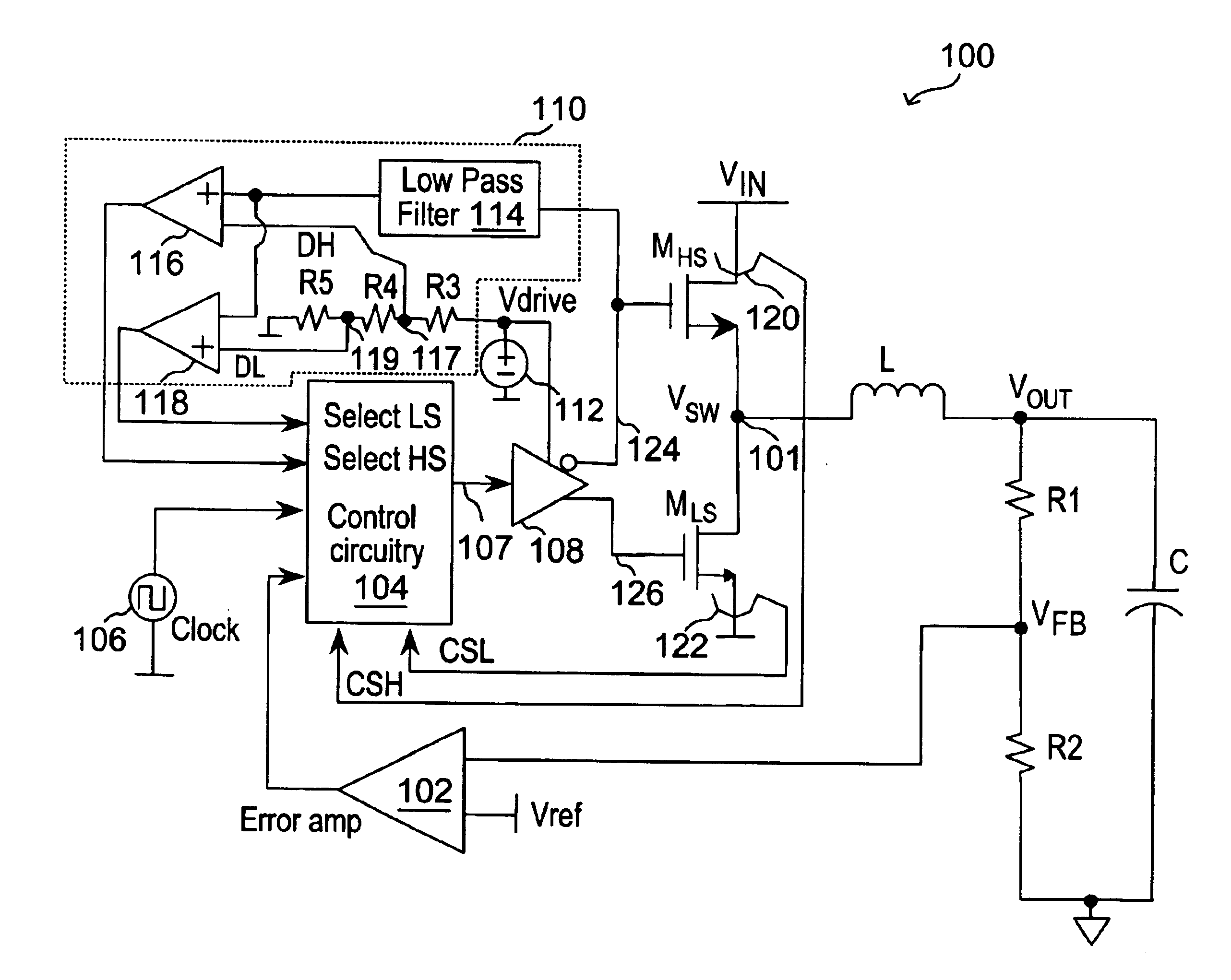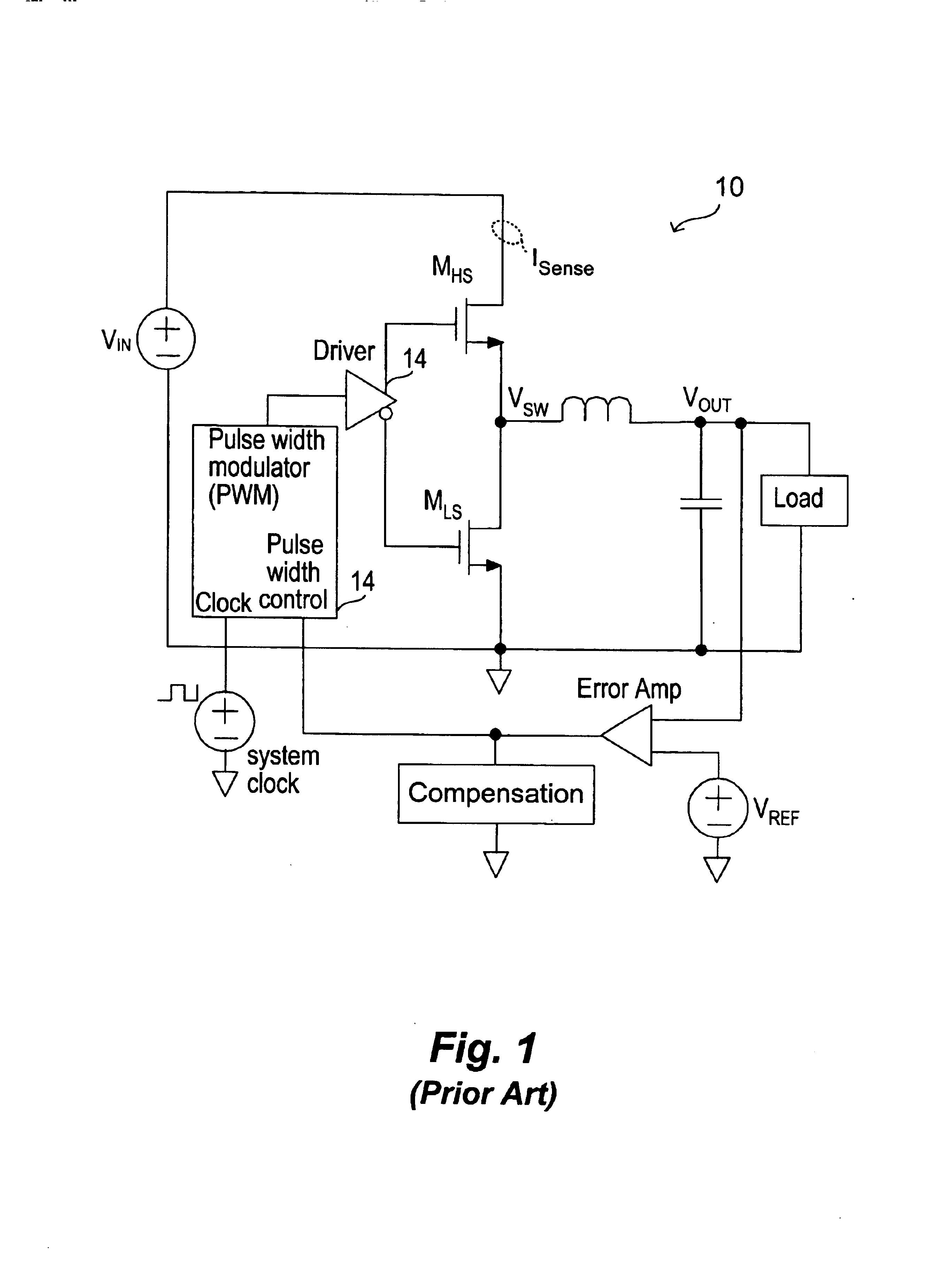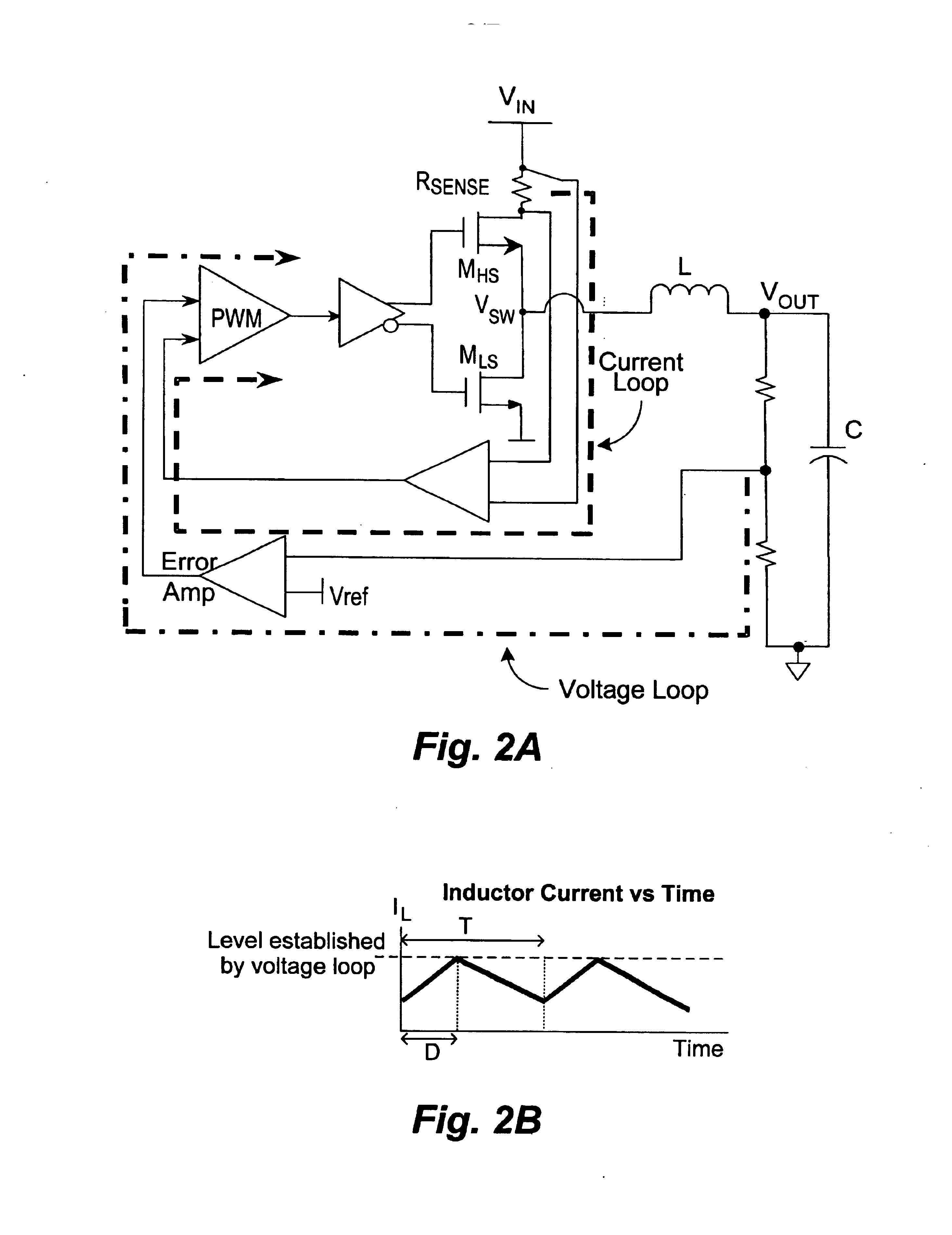Selective high-side and low-side current sensing in switching power supplies
a switching power supply and low-side current technology, applied in the direction of electric variable regulation, process and machine control, instruments, etc., can solve the problems of difficult objective of providing a fast pwm comparator, use of the conventional single-sensing scheme, and short sensing window
- Summary
- Abstract
- Description
- Claims
- Application Information
AI Technical Summary
Benefits of technology
Problems solved by technology
Method used
Image
Examples
Embodiment Construction
In accordance with the principles of the present invention, a current mode switching regulator employs selective current sensing whereby high-side current sensing and low-side current sensing are both provided and depending on the prevailing duty cycle, the current sense signal with the longer sense window is selected. The selection of the current sense signal in turn enables the switching regulator to assert peak or valley control of the duty cycle. In this manner, effective current mode control is realized as an adequate sensing window is always ensured despite changing operation conditions. In one embodiment, a switching regulator performs current sensing at the energy storage element (such as an inductor) and the current sense signal for the increasing or the decreasing current phase is selected based on the duty cycle to assert peak or valley control of the duty cycle.
In the present description, “duty cycle” is defined as the percentage of time within a system clock period a sw...
PUM
 Login to View More
Login to View More Abstract
Description
Claims
Application Information
 Login to View More
Login to View More - R&D
- Intellectual Property
- Life Sciences
- Materials
- Tech Scout
- Unparalleled Data Quality
- Higher Quality Content
- 60% Fewer Hallucinations
Browse by: Latest US Patents, China's latest patents, Technical Efficacy Thesaurus, Application Domain, Technology Topic, Popular Technical Reports.
© 2025 PatSnap. All rights reserved.Legal|Privacy policy|Modern Slavery Act Transparency Statement|Sitemap|About US| Contact US: help@patsnap.com



